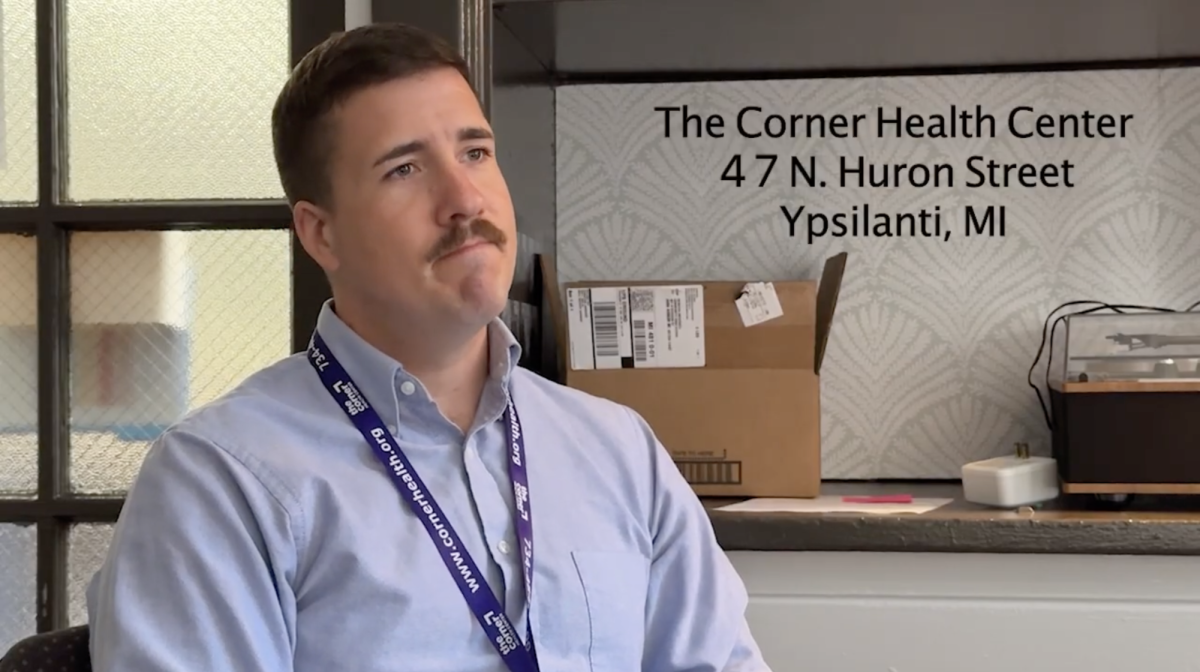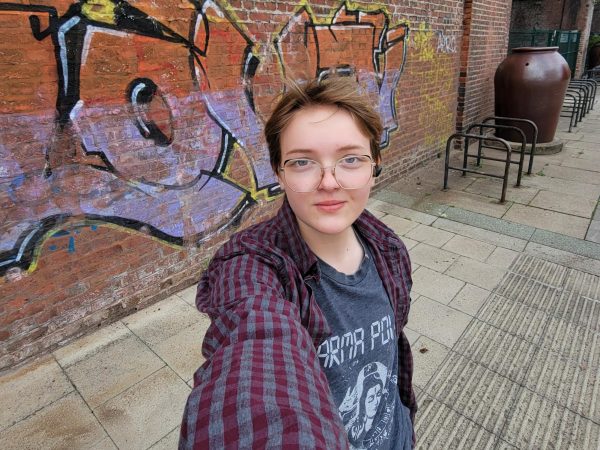Community High School has always stood out among Ann Arbor Public Schools, an alternative school, it is often labeled as “different” or “weird.” For students at CHS, this reputation is both a point of pride and frustration.
Freshman Maeve Fleming-Darbes went to Slauson Middle School and made the decision to go to CHS last year.
“They think that we’re all really, really weird,” Fleming-Darbes said. “When I was in Slauson, I told people I was going to Community, and they were like, ‘Oh, isn’t that the weird kids’ school?’”
The more casual environment is believed to lead students from other schools to assume that CHS lacks academic rigor. In reality, Community students often dual enroll or take classes at the University of Michigan or Washtenaw Community College, which challenges students beyond the typical high school curriculum. According to Great Schools, Community’s academic performance is in the 92nd percentile of high schools in Michigan. In reality, Community received the same A+ rating as Huron, Skyline and Pioneer.
Another misconception that has persisted is drug use among students. Drug use at CHS in the 70s was well documented in the feature documentary, “Welcome to Commie High,” where students were seen using cannabis on campus. Additionally, one article titled, “Drug Abuse Appears on Decline Here” was published in the Ann Arbor News in 1973, it documented drug use at the school during this period. However, many students feel that this stereotype doesn’t reflect CHS’s culture now.
“I don’t really think that everybody is more into drugs here,” said Rowan Theeke, a CHS senior. “We kind of did, used to be a weed school in the past, there’s pictures at Community in the 70s of people just smoking weed in the hallways. But I think that image is hard to drop, and it’s not still the case.”
There are also assumptions about the Community’s demographics. Many see Community as mostly white, wealthy and queer, which students acknowledge has a basis in reality.
“It’s just the truth that it’s more convenient to go to Community if you live 10 to 20 minutes away than if you live on the outskirts of town,” Theeke said. “Then it would make more sense to go to a bigger high school that’s closer to where you live, and the areas surrounding Community High School directly are high-income. It’s downtown rich people.”
The geographic and economic factors surrounding CHS are also undeniable. Ann Arbor is one of the wealthier areas of Michigan. According to the 2020 Census, the city’s median household income is well above the state average at $78,546, whereas the state median household income was $68,505. However, it is worth noting that not all students live downtown or in Ann Arbor. It is common for students to live in Ypsilanti, Saline, Dexter or Chelsea and to commute by car or public transportation.
“If you are a queer eighth grader and you’re horrified of high school and you hear that Community has a larger queer population, then you might feel more comfortable going into that space,” Theeke said.
While CHS students are aware of how they’re perceived, they note that stereotypes go both ways.
“There can be a lot of jokingly bullying of other schools,” said Felix Brown, a CHS sophomore. “It can be all in good fun, but Community isn’t always the best fit for everybody, and the other schools are also great in their own ways. Everyone is just trying to do what they think is best for their future.”
Ultimately, many students take pride in what makes their school different. Whether it’s the close relationships with teachers or the freedom, they see these traits as part of what makes CHS special.
“I think you have a better rapport with your teachers here with a smaller student body,” Brown said. “Teachers are teaching less kids, and it feels like you really can connect with your teachers. I think maybe that’s not the case at other schools. It’s a really positive and awesome thing about Community that other people might not know about.”
CHS’s reputation comes from a mix of reality and perception. While the school’s culture, size and location make it different from other AAPS high schools, students say how they are perceived don’t always match the true experience.
Close relationships with teachers, academic opportunities and a welcoming environment are part of what defines the school. CHS continues to be a place where individuality is front and center.
“The rainbow zebra is a really cool way to represent the school,” Brown said. “It shows we think out of the box; it’s not black and white, like a normal zebra would be. It’s like showing that we strive for many different goals, and everyone’s welcome here. But I think maybe some people could view it as ‘they’re weird.’”










